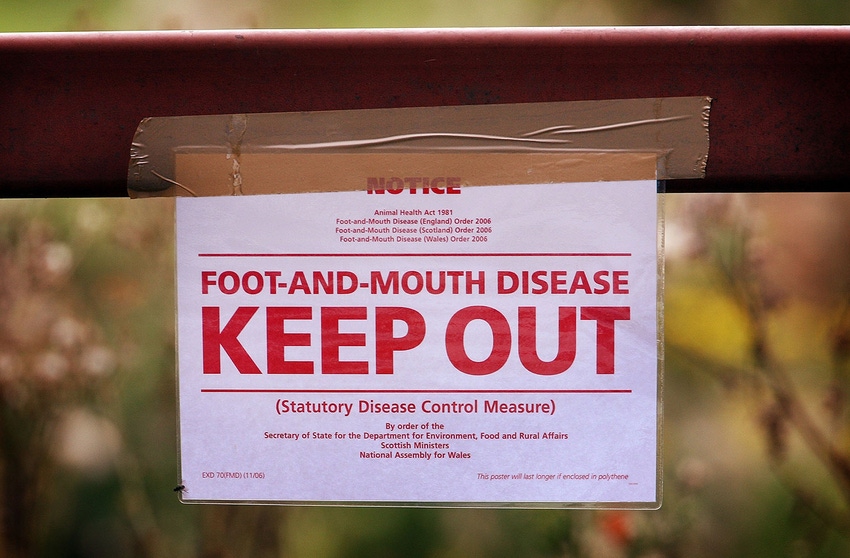House farm bill establishes, funds FMD vaccine bank
An FMD outbreak in the U.S., which would prompt countries to close their markets to U.S. meat exports would cost the beef and pork industries a combined $128 billion over 10 years.
April 12, 2018

The National Pork Producers Council hailed the House Committee on Agriculture’s inclusion in its 2018 farm bill of language establishing and funding a vaccine bank to combat an outbreak of foot-and-mouth disease.
FMD is an infectious viral disease that affects cloven-hooved animals, including cattle, pigs and sheep; it is not a food safety or human health threat. Although the disease was last detected in the United States in 1929, it is endemic in many parts of the world.
Related: Conaway unveils farm bill
“This is a great first step for the livestock industry,” says NPPC President Jim Heimerl, a pork producer from Johnstown, Ohio, and chairman of the NPPC’s Farm Bill Policy Task Force. “Right now, we’re ill-prepared to deal with an FMD outbreak, which would be devastating for pork producers and other sectors of agriculture.”
The agriculture panel’s farm bill calls for first-year mandatory funding of $150 million for the vaccine bank, $70 million in block grants to the states for disease prevention and $30 million for the National Animal Health Laboratory Network, which provides diagnostic support to assist in managing diseases in the United States. For the other years of the five-year farm bill, there’s $30 million in mandatory funding for state block grants and $20 million to be used at the agriculture secretary’s discretion for the vaccine bank, the NAHLN and the states.
The NPPC is urging lawmakers to provide annual funding of $150 million for the vaccine bank, $70 million for state block grants and $30 million for the NAHLN over the life of the farm bill.
Currently, the United States does not have access to enough FMD vaccine to handle more than a very small, localized outbreak. According to Iowa State University economists, an FMD outbreak in the United States, which would prompt countries to close their markets to U.S. meat exports — thus creating a surplus of meat on the domestic market — would cost the beef and pork industries a combined $128 billion over 10 years if livestock producers weren’t able to combat the disease through vaccination. The corn and soybean industries would lose over a decade $44 billion and $25 billion, respectively; and economy-wide job losses would top 1.5 million.
“These costs can only be mitigated if the U.S. can mount a swift and robust response once FMD is detected,” Heimerl says. “Including FMD language in the House farm bill is a huge first step in addressing this gap in our disease prevention preparedness. We are very grateful to the House Agriculture Committee for its efforts on this very important issue for livestock agriculture.”
Related: Likelihood of 2014 Farm Bill extension grows
The House bill also includes funding for the NPPC-supported Market Access Program and the Foreign Market Development Program, both of which help support export markets for U.S. goods. The programs are consolidated as the International Market Development Program.
Source: National Pork Producers Council
About the Author(s)
You May Also Like



